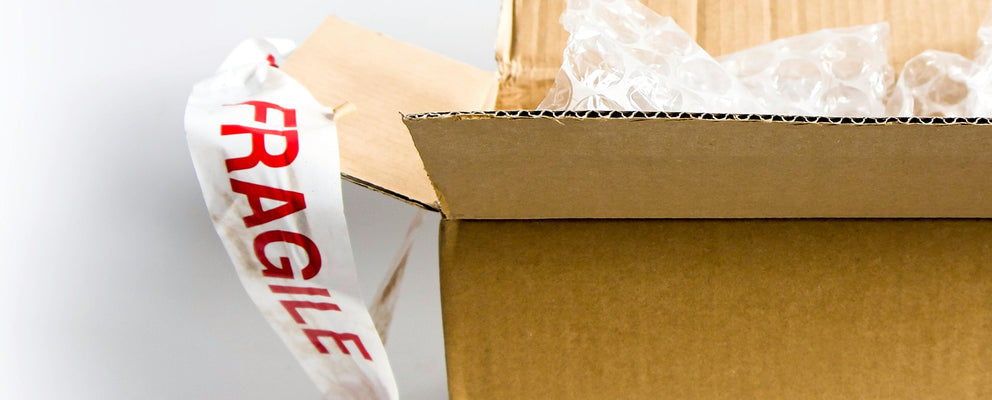In the world of shipping and handling, the safety of fragile goods remains a paramount concern for individuals and businesses alike. The risk of damage to these delicate items can not only lead to financial loss but also emotional distress, especially when dealing with irreplaceable antiques or personal artefacts. This guide aims to shed light on the best practices for packing and transporting fragile goods, ensuring they arrive at their destination intact.
The importance of proper handling and packaging of fragile goods cannot be overstated. Whether it's a set of fine china, sophisticated electronics, or precious artwork, these items require more than just a "fragile" sticker on the box. Understanding the nuances of protective packaging and choosing the right transport method are crucial steps to avoid the heartache of damage.
What Qualifies as Fragile Goods
Fragile goods encompass a wide range of items that are susceptible to damage from shock, vibration, or pressure. This category typically includes glassware, ceramics, electronics, antiques, artwork, and musical instruments. Identifying these items before packing is the first step in ensuring their safety.
Challenges in Shipping Fragile Items
The journey from sender to receiver is fraught with risks for fragile items. Common challenges include rough handling, stacking pressures, and environmental factors such as humidity and temperature fluctuations. Mitigating these risks involves not just careful packing but also selecting the right shipping partner.
Selecting the Right Packaging Materials
The choice of packaging materials is critical in protecting fragile goods. Bubble wrap, foam padding, and corrugated cardboard boxes offer varying degrees of protection for different items. For instance, bubble wrap is excellent for cushioning items, while foam padding can be used to fill voids and prevent movement within the box.
Packing Techniques for Maximum Protection
Packing fragile items is an art that requires attention to detail. Start by wrapping each item individually, securing loose parts, and filling empty spaces with cushioning material. For items like glassware or electronics, additional steps such as using double-boxing techniques can provide extra security.
Transportation Tips
Choosing the right shipping partner is as important as the packing process itself. Look for carriers with experience in handling fragile goods and consider options for shipping insurance to cover potential damage. Furthermore, understanding the shipping route and transit times can help in selecting the best option for your items.
Legal and Insurance Considerations
Before shipping high-value fragile items, it's essential to understand the legal and insurance landscape. Many shipping companies offer insurance options for fragile goods, but it's important to read the fine print and ensure adequate coverage. Additionally, familiarising yourself with any legal restrictions or documentation requirements for international shipments can prevent delays and complications.
Packing and shipping fragile goods demand a comprehensive approach, combining the right materials, techniques, and transport options. By following the practices outlined in this guide, you can significantly reduce the risk of damage to your precious items. Remember, the time and effort invested in proper packaging are invaluable compared to the cost and disappointment of receiving damaged goods. Let's commit to ensuring the safe transport of fragile items, preserving their value and significance for years to come.
The importance of proper handling and packaging of fragile goods cannot be overstated. Whether it's a set of fine china, sophisticated electronics, or precious artwork, these items require more than just a "fragile" sticker on the box. Understanding the nuances of protective packaging and choosing the right transport method are crucial steps to avoid the heartache of damage.
What Qualifies as Fragile Goods
Fragile goods encompass a wide range of items that are susceptible to damage from shock, vibration, or pressure. This category typically includes glassware, ceramics, electronics, antiques, artwork, and musical instruments. Identifying these items before packing is the first step in ensuring their safety.
Challenges in Shipping Fragile Items
The journey from sender to receiver is fraught with risks for fragile items. Common challenges include rough handling, stacking pressures, and environmental factors such as humidity and temperature fluctuations. Mitigating these risks involves not just careful packing but also selecting the right shipping partner.
Selecting the Right Packaging Materials
The choice of packaging materials is critical in protecting fragile goods. Bubble wrap, foam padding, and corrugated cardboard boxes offer varying degrees of protection for different items. For instance, bubble wrap is excellent for cushioning items, while foam padding can be used to fill voids and prevent movement within the box.
Packing Techniques for Maximum Protection
Packing fragile items is an art that requires attention to detail. Start by wrapping each item individually, securing loose parts, and filling empty spaces with cushioning material. For items like glassware or electronics, additional steps such as using double-boxing techniques can provide extra security.
Transportation Tips
Choosing the right shipping partner is as important as the packing process itself. Look for carriers with experience in handling fragile goods and consider options for shipping insurance to cover potential damage. Furthermore, understanding the shipping route and transit times can help in selecting the best option for your items.
Legal and Insurance Considerations
Before shipping high-value fragile items, it's essential to understand the legal and insurance landscape. Many shipping companies offer insurance options for fragile goods, but it's important to read the fine print and ensure adequate coverage. Additionally, familiarising yourself with any legal restrictions or documentation requirements for international shipments can prevent delays and complications.
Packing and shipping fragile goods demand a comprehensive approach, combining the right materials, techniques, and transport options. By following the practices outlined in this guide, you can significantly reduce the risk of damage to your precious items. Remember, the time and effort invested in proper packaging are invaluable compared to the cost and disappointment of receiving damaged goods. Let's commit to ensuring the safe transport of fragile items, preserving their value and significance for years to come.


